11.3 Social Influence
318
Social psychology’s great lesson is the enormous power of social influence. We adjust our views to match the desires of those around us. We follow orders. We behave as others in our group behave. On campus, jeans are the dress code. On New York’s Wall Street, dress suits are the norm. Let’s examine the pull of these social strings. How strong are they? How do they operate? When do we break them?
Conformity and Obedience
LOQ 11-
Fish swim in schools. Birds fly in flocks. And humans, too, tend to go with their group—
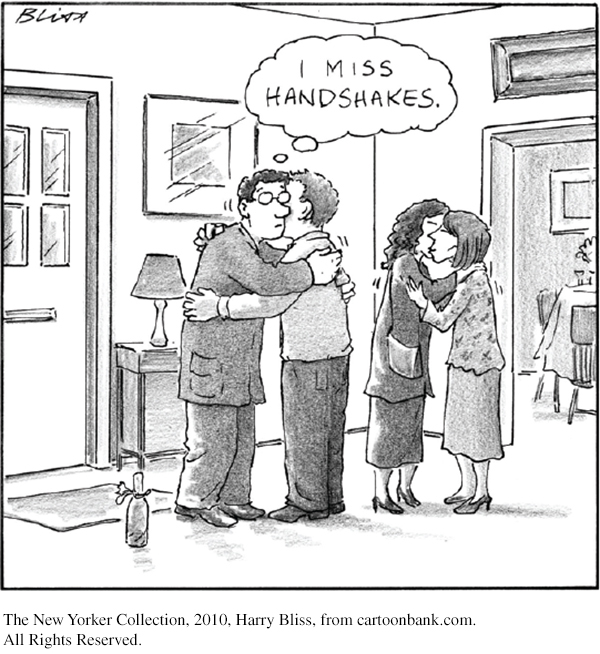
Researchers demonstrated this chameleon effect in a clever experiment (Chartrand & Bargh, 1999). They had students work in a room beside another person, who was actually the experimenter’s assistant. Sometimes the assistants rubbed their own face. Sometimes they shook their foot. Sure enough, the students tended to rub their face when with the face-
Automatic mimicry helps us to empathize, to feel what others feel. This helps explain why we feel happier around happy people than around depressed ones. The more we mimic, the greater our empathy, and the more people tend to like us (Chartrand & van Baaren, 2009; Lakin et al., 2008).
Group Pressure and Conformity
conformity adjusting our behavior or thinking to coincide with a group standard.
To study conformity—adjusting our behavior or thinking toward some group standard—
Now comes the third trial, and the correct answer seems just as clear-

319
In Asch’s experiments, college students experienced this conflict. Answering questions alone, they were wrong less than 1 percent of the time. But the odds were quite different when several others—
Experiments reveal that we are more likely to conform when we
are made to feel incompetent or insecure.
are in a group with at least three people.
are in a group in which everyone else agrees. (If just one other person disagrees, we will almost surely disagree.)
admire the group’s status and attractiveness.
have not already committed ourselves to any response.
know that others in the group will observe our behavior.
are from a culture that strongly encourages respect for social standards.

“Have you ever noticed how one example—
Marian Wright Edelman, The Measure of Our Success, 1994
normative social influence influence resulting from a person’s desire to gain approval or avoid disapproval.
informational social influence influence resulting from a person’s willingness to accept others’ opinions about reality.
 To review the classic conformity studies and experience a simulated experiment, visit LaunchPad’s PsychSim 6: Everybody’s Doing It!
To review the classic conformity studies and experience a simulated experiment, visit LaunchPad’s PsychSim 6: Everybody’s Doing It!
Why do we so often think what others think and do what they do? Why, when asked controversial questions, are students’ answers more varied when using anonymous electronic clickers than when publicly raising hands (Stowell et al., 2010)? Why do we clap when others clap, eat as others eat, believe what others believe, even see what others see? Sometimes it’s to avoid rejection or to gain social approval (Williams & Sommer, 1997). In such cases, we are responding to normative social influence. We are sensitive to social norms—
Is conformity good or bad? The answer depends on whether people go along with what we believe. When people conform to our values, we applaud them for being “open-
Our values, as we will see in Chapter 12, are influenced by our culture. Western Europeans and people in most English-
Retrieve + Remember
Question 11.4
•Which of the following strengthens conformity to a group?
Finding the group attractive
Feeling secure
Coming from an individualist culture
Having already decided on a response
ANSWER: a
Obedience
Social psychologist Stanley Milgram (1963, 1974), a high school classmate of Phillip Zimbardo and later a student of Solomon Asch, knew that people often give in to social pressure. But how would they respond to outright commands? To find out, he undertook experiments that have become social psychology’s most famous and most hotly debated.
320
Imagine yourself as one of the nearly 1000 people who took part in Milgram’s 20 experiments. You have responded to an ad for participants in a Yale University psychology study of the effect of punishment on learning. Professor Milgram’s assistant asks you and another person to draw slips from a hat to see who will be the “teacher” and who will be the “learner.” You draw the “teacher” slip and are asked to sit down in front of a machine, which has a series of labeled switches. The “learner” is led to a nearby room and strapped into a chair. From the chair, wires run through the wall to your machine. You are given your task: Teach and then test the learner on a list of word pairs. If the learner gives a wrong answer, you are to flip a switch to deliver a brief electric shock. For the first wrong answer, you will flip the switch labeled “15 Volts—
The experiment begins, and you deliver the shocks after the first and second wrong answers. If you continue, you hear the learner grunt when you flick the third, fourth, and fifth switches. After you flip the eighth switch (“120 Volts—
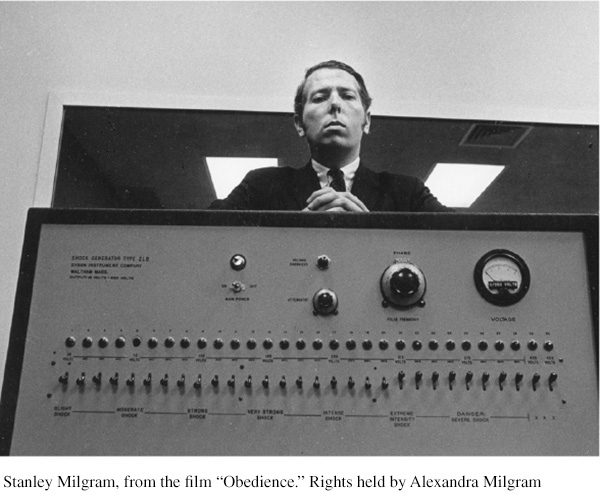
If you obey, you hear the learner shriek in agony as you continue to raise the shock level after each new error. After the 330-
Would you follow an experimenter’s commands to shock someone? At what level would you refuse to obey? Before he started the experiments, Milgram asked people what they would do. Most people were sure they would stop playing such a sadistic-
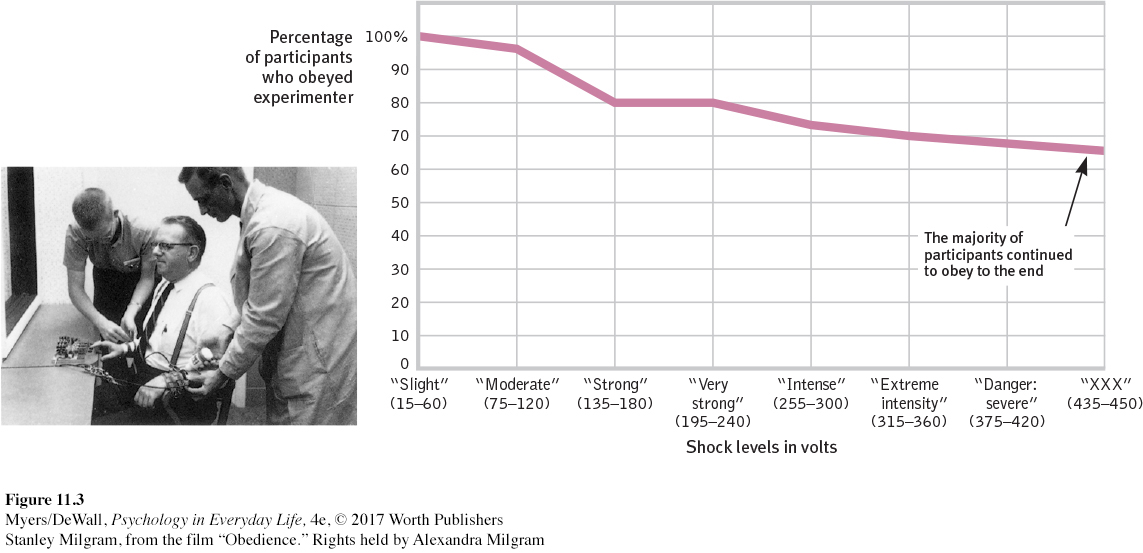
How can we explain these findings? Could they be a product of the 1960s culture? Would people today be less likely to obey an order to hurt someone? No. When researchers replicated Milgram’s basic experiment, 70 percent of the participants obeyed up to the 150-
Could Milgram’s findings reflect some aspect of gender behavior found only in males? Again, the answer is No. In 10 later studies, women obeyed at rates similar to men (Blass, 1999).
Could the teachers have figured out the hoax—
In later experiments, Milgram discovered some conditions that did influence people’s behavior. When he varied some details of the situation, the percentage of participants who fully obeyed ranged from 0 to 93 percent. Obedience was highest when
the person giving the orders was close at hand and was perceived to be a legitimate authority figure.
the authority figure was supported by a respected, well-
known institution (Yale University). the victim was depersonalized or at a distance, even in another room. Similarly, many soldiers in combat either do not fire their rifles at an enemy they can see or do not aim them properly. Such refusals to kill are rare among those who kill from a distance. (Veterans who operated remotely piloted drones have suffered much less posttraumatic stress than have on-
the- ground Afghanistan and Iraq war veterans [Miller, 2012a; Padgett, 1989].) there were no role models for defiance. (Teachers did not see any other participant disobey the experimenter.)
321

The power of legitimate, close-
The commander gave the recruits a chance to refuse to participate in the executions. Only about a dozen immediately refused. Within 17 hours, the remaining 485 officers killed 1500 helpless women, children, and elderly, shooting them in the back of the head as they lay face down. Hearing the victims’ pleas and seeing the gruesome results, some 20 percent of the officers did eventually disobey. They did so either by missing their victims or by hiding until the slaughter was over (Browning, 1992). In real life, as in Milgram’s experiments, those who resisted did so early, and they were the minority.
“I was only following orders.”
Adolf Eichmann, director of Nazi deportation of Jews to concentration camps
A different story played out in the French village of Le Chambon. There, villagers openly defied orders to cooperate with the “New Order.” They sheltered French Jews and sometimes helped them escape across the Swiss border. The villagers’ Protestant ancestors had themselves been persecuted. Their pastors had been teaching them to “resist whenever our adversaries will demand of us obedience contrary to the orders of the Gospel” (Rochat, 1993). Ordered by police to give a list of sheltered Jews, the head pastor modeled defiance. “I don’t know of Jews, I only know of human beings.” At great personal risk, the resisters made a commitment to defy. Throughout the war, they suffered from poverty and were punished for their disobedience. But they drew support from their beliefs, their role models, their interactions with one another, and their own early actions. They remained defiant to the war’s end.
Lessons From the Conformity and Obedience Studies
322
LOQ 11-
How do the laboratory experiments on social influence relate to everyday life? How does judging the length of a line or flipping a shock switch relate to everyday social behavior? Psychology’s experiments aim not to re-
In Milgram’s experiments and their modern replications, participants were also torn. Should they respond to the pleas of the victim or the orders of the experimenter? Their moral sense warned them not to harm another. But that same sense also prompted them to obey the experimenter and to be a good research participant. With kindness and obedience on a collision course, obedience usually won.
These experiments demonstrated that strong social influences can make people conform to falsehoods or give in to cruelty. Milgram saw this as the most basic lesson of his work. “Ordinary people, simply doing their jobs, and without any particular hostility on their part, can become agents in a terrible destructive process” (1974, p. 6).
Using the foot-
In any society, great evils often grow out of people’s acceptance of lesser evils. The Nazi leaders suspected that most German civil servants would resist shooting or gassing Jews directly. But they found them surprisingly willing to handle the paperwork of the Holocaust (Silver & Geller, 1978). Milgram found a similar reaction in his experiments. When he asked 40 men to give the learning test while someone else delivered the shocks, 93 percent agreed. Cruelty does not require devilish villains. All it takes is ordinary people corrupted by an evil situation. Ordinary students may follow orders to haze new members joining their group. Ordinary employees may follow orders to produce and market harmful products. Ordinary soldiers may follow orders to torture prisoners (Lankford, 2009).
In Jozefow and Le Chambon, as in Milgram’s experiments, those who resisted usually did so early. After the first acts of obedience or resistance, attitudes began to follow and justify behavior.
What have social psychologists learned about the power of the individual? Social control (the power of the situation) and personal control (the power of the individual) interact. Much as water dissolves salt but not sand, so rotten situations turn some people into bad apples while others resist (Johnson, 2007).
People do resist. When feeling pressured, some react by doing the opposite of what is expected (Brehm & Brehm, 1981). Rosa Parks’ refusal to sit at the back of the bus ignited the U.S. civil rights movement.
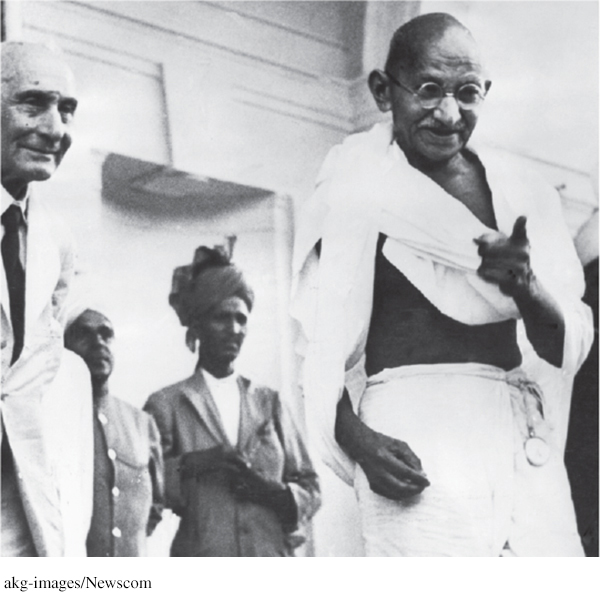
The power of one or two individuals to sway majorities is minority influence (Moscovici, 1985). In studies, one finding repeatedly stands out. When you are the minority, you are far more likely to sway the majority if you hold firmly to your position and don’t waffle. This tactic won’t make you popular, but it may make you influential, especially if your self-
Retrieve + Remember
Question 11.5
•In psychology’s most famous obedience experiments, most participants obeyed an authority figure’s demands to inflict presumed life-
ANSWER: Stanley Milgram
Question 11.6
•In the obedience experiments, people were most likely to follow orders in four situations. What were those situations?
ANSWER: The Milgram studies showed that people were most likely to follow orders when (a) the person giving the orders was nearby and was a legitimate authority figure, (b) the authority figure was supported by a respected institution, (c) the victim was not nearby, and (d) there were no models for defiance.
Group Influence
LOQ 11-
Imagine standing in a room, holding a fishing pole. Your task is to wind the reel as fast as you can. On some occasions you wind in the presence of another participant who is also winding as fast as possible. Will the other’s presence affect your own performance?
In one of social psychology’s first experiments, Norman Triplett (1898) found that adolescents would wind a fishing reel faster in the presence of someone doing the same thing. He and later social psychologists studied how the presence of others affects our behavior. Group influences operate both in simple groups—
Social Facilitation
323
social facilitation improved performance on simple or well-
Triplett’s finding—

This effect helps explain the home-
| Sport | Years | Home games won |
|---|---|---|
| Nippon League Baseball | 1998– |
53.6% |
| Major League Baseball | 1903– |
53.9% |
| National Hockey League | 1917– |
55.7% |
| International Rugby | 1871– |
56.9% |
| National Football League | 1966– |
57.3% |
| International Cricket | 1877– |
57.4% |
| National Basketball Association | 1946– |
60.5% |
| Women’s National Basketball Association | 2003– |
61.7% |
| English Premier League Soccer | 1993– |
63.0% |
| NCAA Men’s Basketball | 1947– |
68.8% |
| Major League Soccer | 2002– |
69.1% |
Source: Data from Moskowitz & Wertheim, 2011.
The point to remember: What you do well, you are likely to do even better in front of an audience, especially a friendly audience. What you normally find difficult may seem all but impossible when you are being watched.
Social facilitation also helps explain a funny effect of crowding. Comedians and actors know that a “good house” is a full one. What they may not know is that crowding triggers arousal. Comedy routines that are mildly amusing to people in an uncrowded room seem funnier in a densely packed room (Aiello et al., 1983; Freedman & Perlick, 1979). In experiments, participants seated close to one another liked a friendly person even more and an unfriendly person even less (Schiffenbauer & Schiavo, 1976; Storms & Thomas, 1977). So, to increase the chances of lively interaction at your next event, choose a room or set up seating that will just barely hold all your guests.
Social Loafing
Does the presence of others have the same arousal effect when we perform a task as a group? In a team tug-
324

social loafing the tendency for people in a group to exert less effort when pooling their efforts toward attaining a common goal than when individually accountable.
This lessened effort is called social loafing (Jackson & Williams, 1988; Latané, 1981). Experiments in the United States, India, Thailand, Japan, China, and Taiwan have found social loafing on various tasks. It was especially common among men in individualist cultures (Karau & Williams, 1993). What causes social loafing? Three things:
People acting as part of a group feel less accountable, so they worry less about what others think of them.
Group members may not believe their individual contributions make a difference (Harkins & Szymanski, 1989; Kerr &Bruun, 1983).
Loafing is its own reward. When group members share equally in the benefits regardless of how much they contribute, some may slack off. (If you’ve worked on group assignments, you’re probably already aware of this.) People who are not highly motivated, or who don’t identify strongly with the group, may free ride on others’ efforts.
Deindividuation
deindividuation the loss of self-
We’ve seen that the presence of others can arouse people, or it can make them feel less responsible. But sometimes the presence of others does both, triggering behavior that can range from a food fight to vandalism or rioting. This process of losing self-
Deindividuation thrives, for better or for worse, in many different settings. The anonymity of online discussion boards and blog comment sections can unleash mocking or cruel words. Tribal warriors wearing face paints or masks have been more likely than those with exposed faces to kill, torture, or mutilate captured enemies (Watson, 1973). Online bullies, who would never say “You’re the ugliest person I know” to someone’s face, will hide behind their anonymity. When we shed self-
| Phenomenon | Social context | Psychological effect of others’ presence | Behavioral effect |
|---|---|---|---|
| Social facilitation | Individual being observed | Increased arousal | Amplified dominant behavior, such as doing better what one does well (or doing worse what is difficult) |
| Social loafing | Group projects | Reduced feelings of responsibility when not individually accountable | Decreased effort |
| Deindividuation | Group setting that increases arousal and anonymity | Reduced self- |
Lowered self- |

Group Polarization
LOQ 11-
Over time, differences between groups of college students tend to grow. If the first-
325
group polarization strengthening of a group’s preexisting attitudes through discussions within the group.
In each case, the beliefs and attitudes students bring to a group grow stronger as they discuss their views with others who share them. This process, called group polarization, can have positive results, as when low-

Group polarization can feed extremism and even suicide terrorism. The terrorist mentality does not erupt suddenly on a whim (McCauley, 2002; McCauley & Segal, 1987; Merari, 2002). It usually begins slowly, among people who get together because of a grievance. As group members interact in isolation (sometimes with other “brothers” and “sisters” in camps), their views grow more and more extreme. Increasingly, they divide the world into “us” against “them” (Moghaddam, 2005; Qirko, 2004).
The Internet provides an easily accessible medium for group polarization. I [DM] got my start in social psychology with experiments on group polarization. Never then did I imagine the potential dangers, or the creative possibilities, of polarization in virtual groups. (For more on this topic, see Thinking Critically About: The Internet as Social Amplifier.)
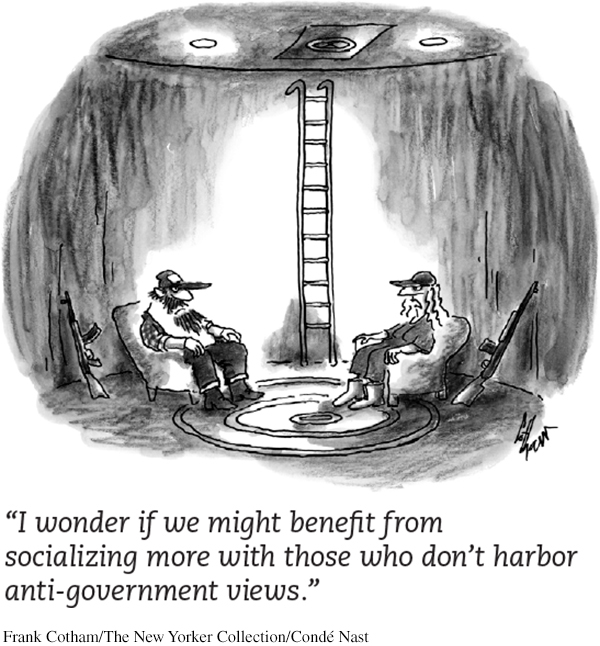
Groupthink
LOQ 11-
So group interaction can influence our personal decisions. Can it also influence important national decisions? It can and it does. In one famous decision, it led to what is now known as the “Bay of Pigs fiasco.” President John F. Kennedy and his advisers decided in 1961 to invade Cuba with 1400 CIA-
groupthink the mode of thinking that occurs when the desire for harmony in a decision-
Reading a historian’s account of the ill-
Later studies showed that groupthink—
326
LOQ 11-
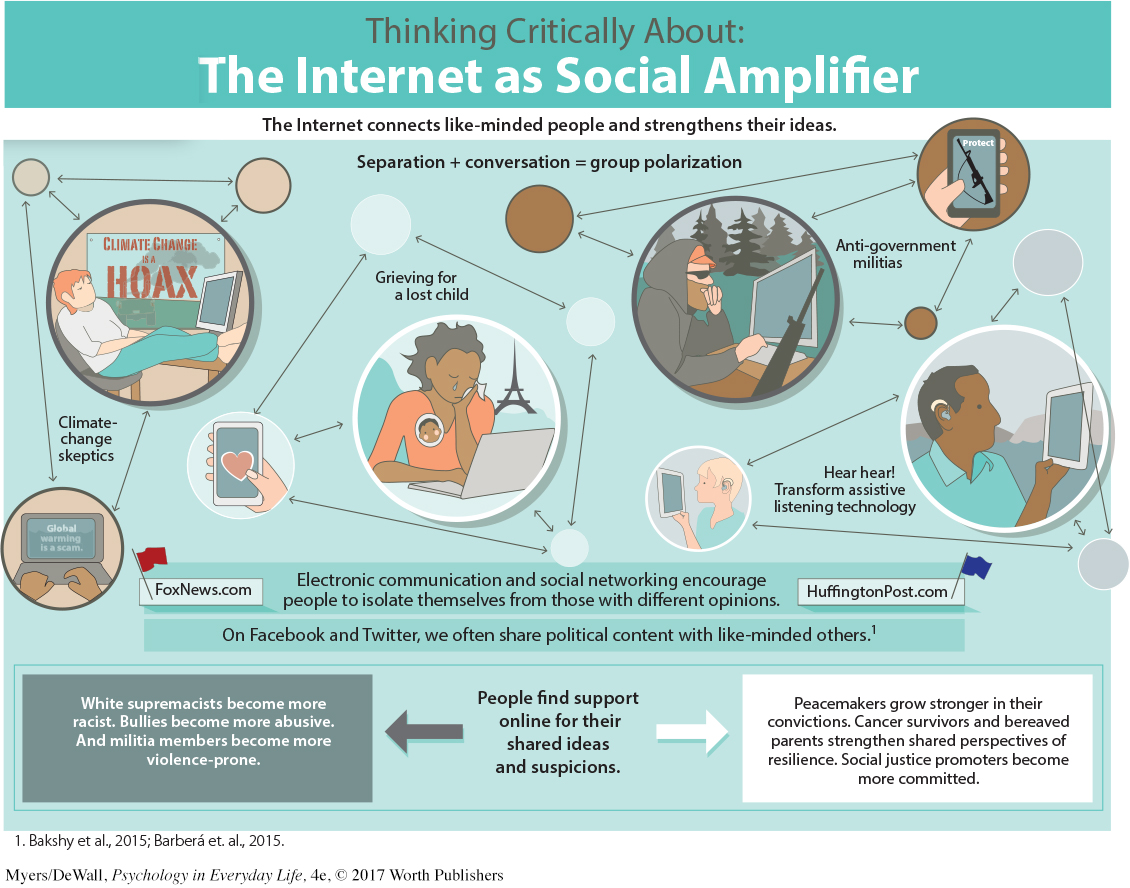
How can we prevent groupthink? Leaders can welcome open debate, invite experts’ critiques of developing plans, and assign people to identify possible problems.
The point to remember: Two heads are often better than one, especially when we encourage independent thinking and open debate.
Retrieve + Remember
Question 11.7
•What is social facilitation, and under what circumstances is it most likely to occur?
ANSWER: This improved performance in the presence of others is most likely to occur with a well-
Question 11.8
•People tend to exert less effort when working with a group than they would alone, which is called__________ _________.
ANSWER: social loafing
Question 11.9
•You are organizing a meeting of fiercely competitive political candidates and their supporters. To add to the fun, friends have suggested handing out masks of the candidates’ faces for supporters to wear. What effect might these masks trigger?
ANSWER: The anonymity provided by the masks, combined with the arousal of the competitive setting, might create deindividuation (lessened self-
Question 11.10
•When like-
ANSWER: group polarization
Question 11.11
•When a group’s desire for harmony overrides its realistic analysis of other options, _______ has occurred.
ANSWER: groupthink